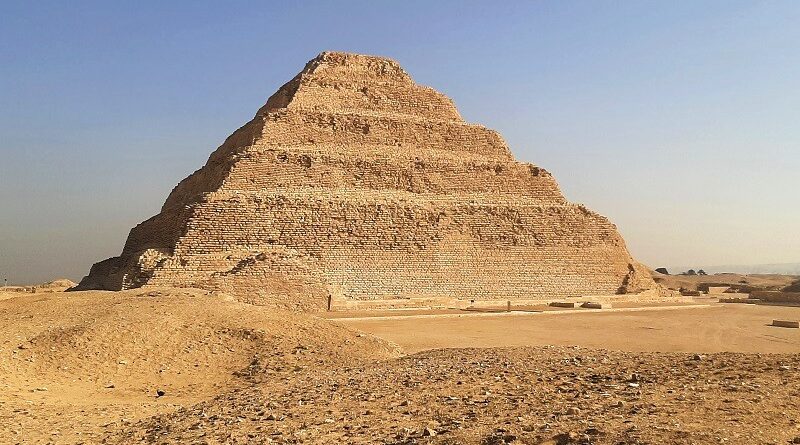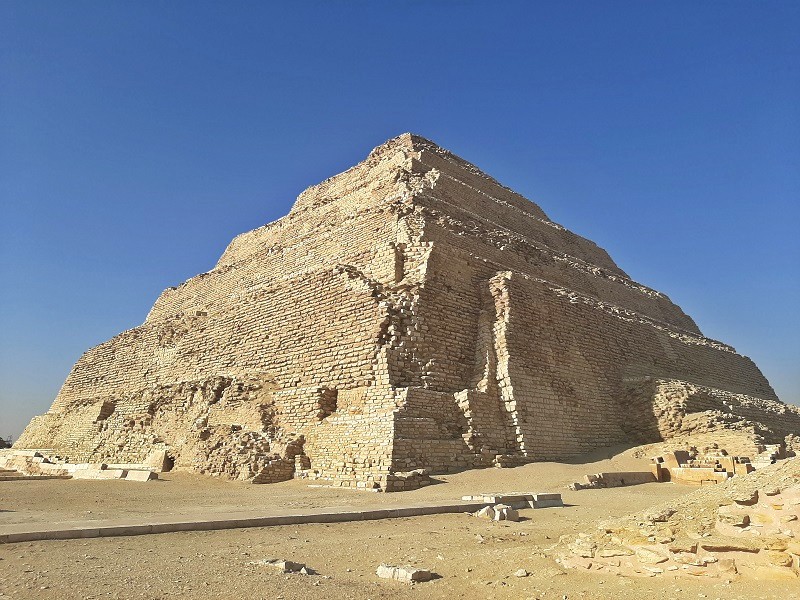A Visit to the Pyramid of Djoser and the Saqqara Necropolis
This visit guide tells you all you need to know about the Step Pyramid of Djoser and the necropolis of Saqqara just south of Cairo.
A Cairo day trip to Saqqara
The Pyramids of Giza are, of course, Cairo’s top attraction, and I managed to visit these pyramids when I first arrived in Egypt.
However, there are plenty of more interesting pyramids and ancient Egyptian sights to discover in the greater Cairo area.
Now that I had returned to Egypt’s capital after my Nile river cruise from Aswan to Luxor, it was time to discover some of these other sights, starting with the Saqqara Necropolis and the Step Pyramid of Djoser.
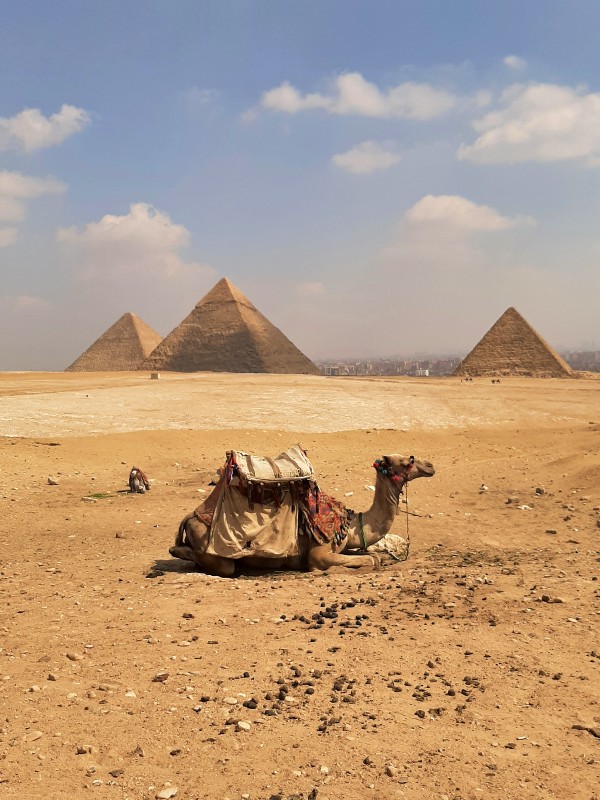
How to get to Saqqara
The Saqqara Necropolis and the Pyramid of Djoser are located 32 kilometres (20 miles) south of downtown Cairo, a distance which will take you about an hour to cover by car due to the slow-moving traffic.
Most people visit Saqqara and the Pyramid of Djoser by organised tour, or they simply charter a taxi and negotiate a good fare, including enough waiting time at the site so you can look around at ease.
The latter was exactly what I did, as I got myself a car and driver for $30 for a half-day trip to the Saqqara Necropolis, the Step Pyramid of Djoser, Ancient Memphis, and the Dahshur Pyramids.
All of these sights are located relatively close to each other so it makes sense to combine them.
Although it is possible to reach Saqqara by public transport, this is such a cumbersome and lengthy affair that I wouldn’t really recommend it.
If you really want to visit by public transport, take the Cairo metro to El Monib station, where you have to switch to a minibus bound for the town of El Badrasheen.
These minibuses depart every 20 to 30 minutes, and take an hour to reach El Badrasheen.
Since the Pyramid of Djoser was closed for restoration during my visit, and given that I already explored numerous temples and tombs during my trip across Egypt, I opted to purchase the standard ticket only.
About the Saqqara Necropolis

The Step Pyramid of Djoser
Of all the sights at the Saqqara Necropolis, the most famous one is the Step Pyramid of Djoser.
The Pyramid of Djoser is referred to as a step pyramid because, unlike the pyramids at Giza, it features six distinct platforms that rise to a height of 62 metres (204 feet).
Designed by the Pharaoh Djoser’s chancellor Imhotep, who also happened to be an architect and High Priest to the sun god Ra, this pyramid was one of the first large-scale constructions made from cut stone in the entire world.
The pyramid served as the burial place for Pharaoh Djoser.
Mortuary complex
The Step Pyramid of Djoser is part of a larger mortuary complex and is surrounded by courts, temples and walls.
Most of it was only discovered in the 19th and 20th century, as it was buried for centuries under the shifting sands of the desert.
It’s important to remember than in ancient Egypt, a pyramid or a tomb was not a simple grave where they just laid a Pharaoh to rest and be done with it.
There were all kinds of courts, chapels, temples and reception halls surrounding the Pyramid of Djoser to facilitate the Pharaoh’s wellbeing in the afterlife.
They were the site of funeral rites, processions and celebrations.
Just like many other Egyptian temples, you enter the funerary complex through a colonnaded corridor known as the hypostyle hall.
Another notable sight within the larger mortuary complex of Djoser is the Heb Sed Court.
Here, the continued rule of the Pharaoh was celebrated in the giant festival of Heb Sed, in which also the unification of Egypt was ritually re-enacted.



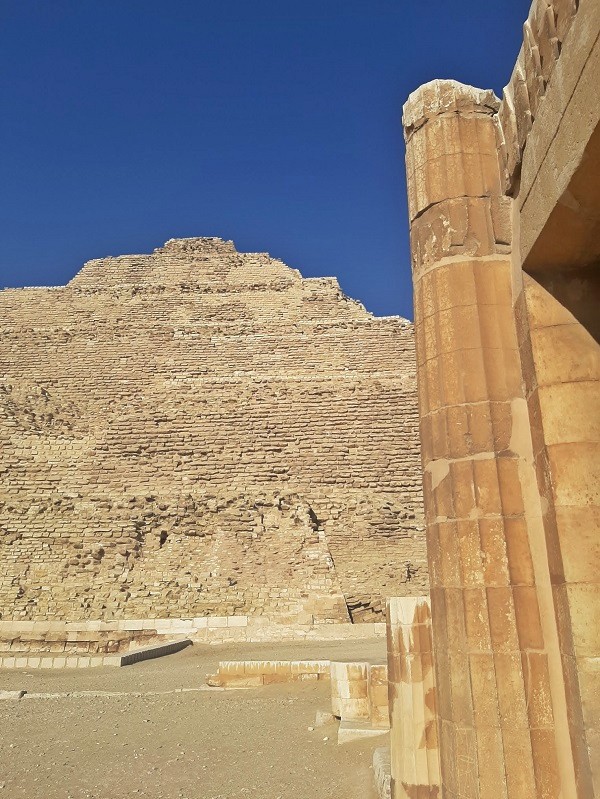


Pyramids and mastasbas
Towards the north-east of the Pyramid of Djoser you can find two other pyramids, namely the Pyramid of Userkaf and the Pyramid of Teti.
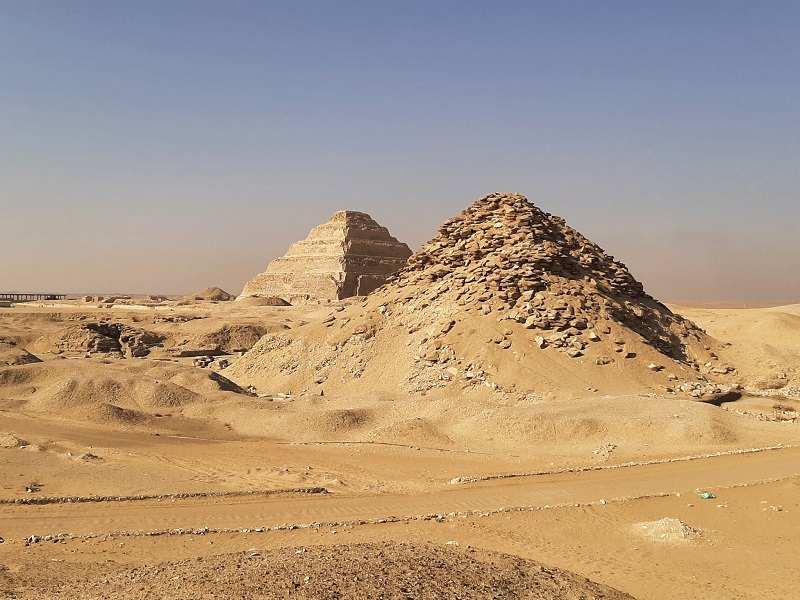

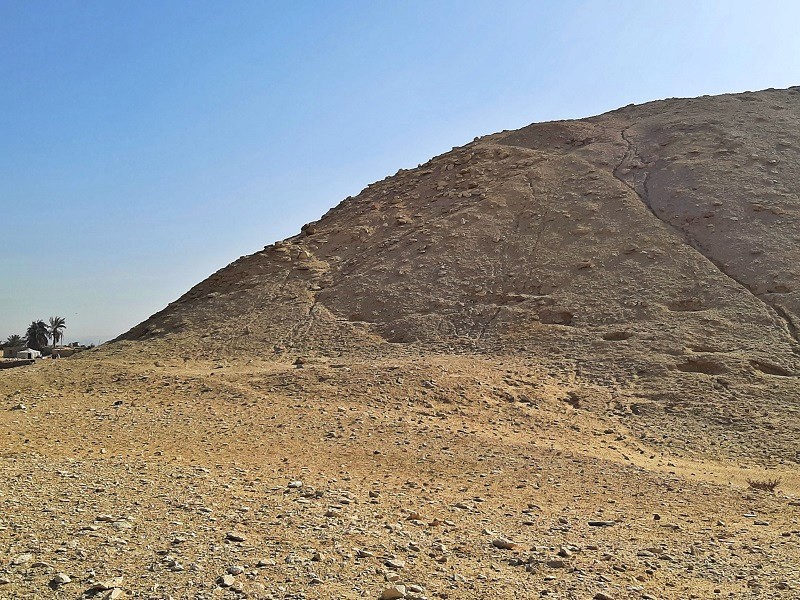
Walking around the necropolis
One of the delights of Saqqara compared to Giza is that there were hardly any other tourists around.
You can explore the Saqqara Necropolis in all peace and quietness without having to make your way through dozens of tour groups or being bothered by all kinds of touts and tricksters.
One of the most interesting parts of the necropolis to explore is the area south of the Pyramid of Djoser.
Here, you will find the ruins of dozens of tombs, courts and other notable buildings, such as the Double Mastaba of Queens Khenut and Nebet.
On the southern horizon, you can see the Dahshur Pyramids – a visit there can easily be combined with Saqqara if you have arranged a taxi or have your own vehicle.

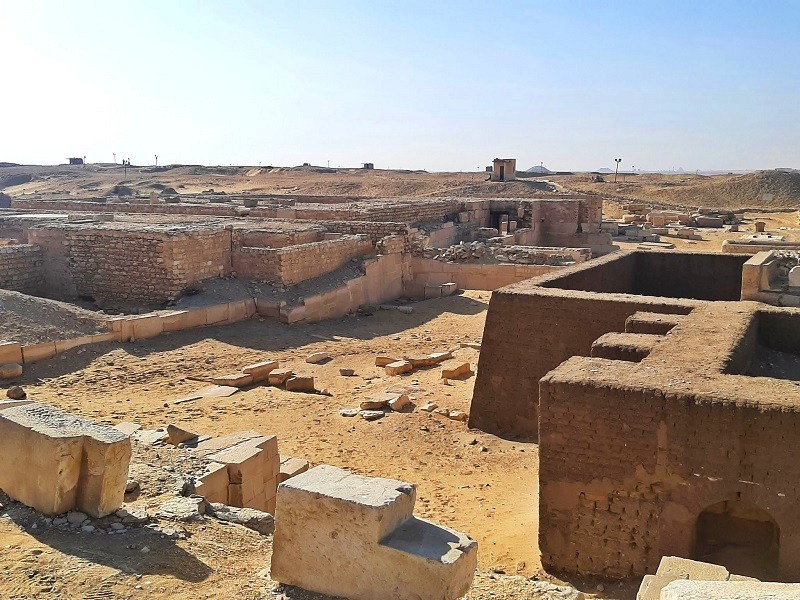
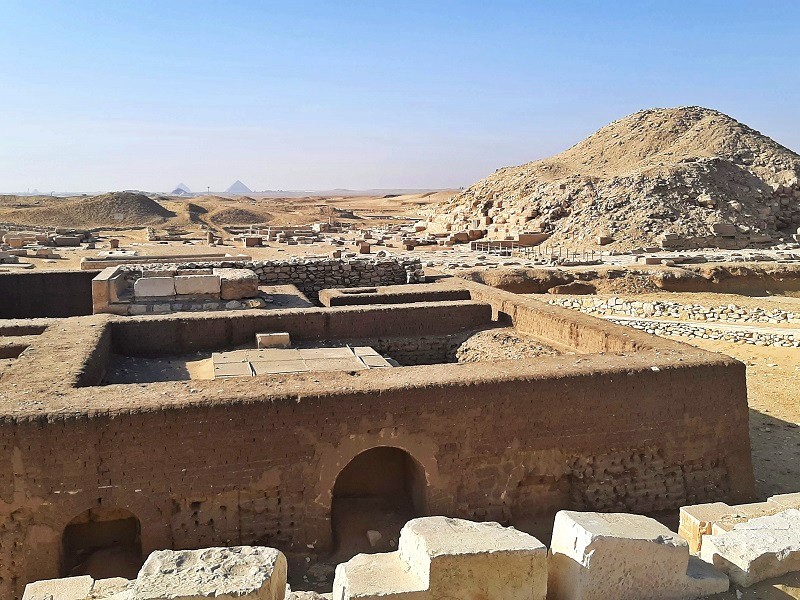

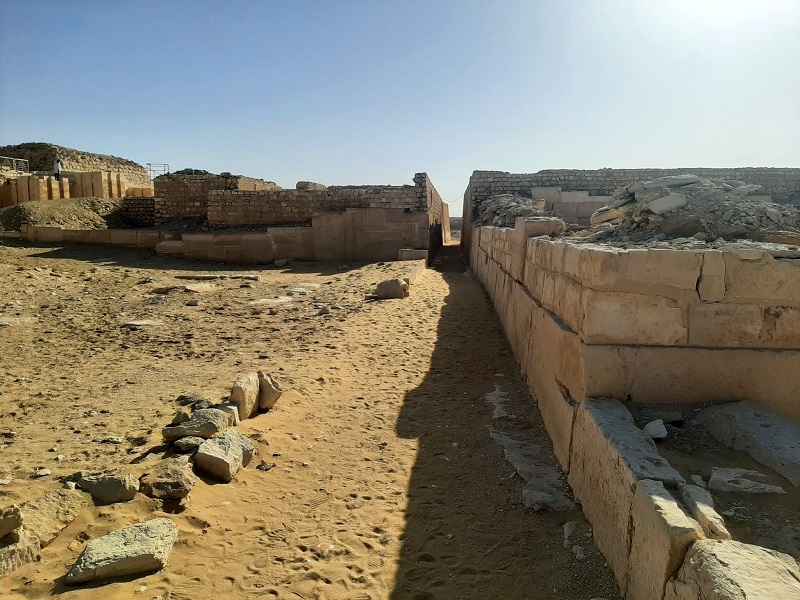
The Pyramid of Unas
Another highly interesting sight you can visit at the Saqqara Necropolis is the Pyramid of Unas.
Built in the 5th Dynasty around the 24th century BC for the Egyptian Pharaoh Unas, this pyramid was originally smooth-sided but has weathered so much over time that it looks more like a heap of stones.
If you walk around the pyramid, you can discover some parts where the smooth exterior surface is still visible.
With an original height of 43 metres (141 feet), the Pyramid of Unas certainly wasn’t the most impressive of all the Egyptian pyramids.
Known as the Pyramid Texts, these funerary texts were carved into the wall and meant to help the deceased Pharaoh in his resurrection by guiding him towards the sun god Ra in the afterlife.
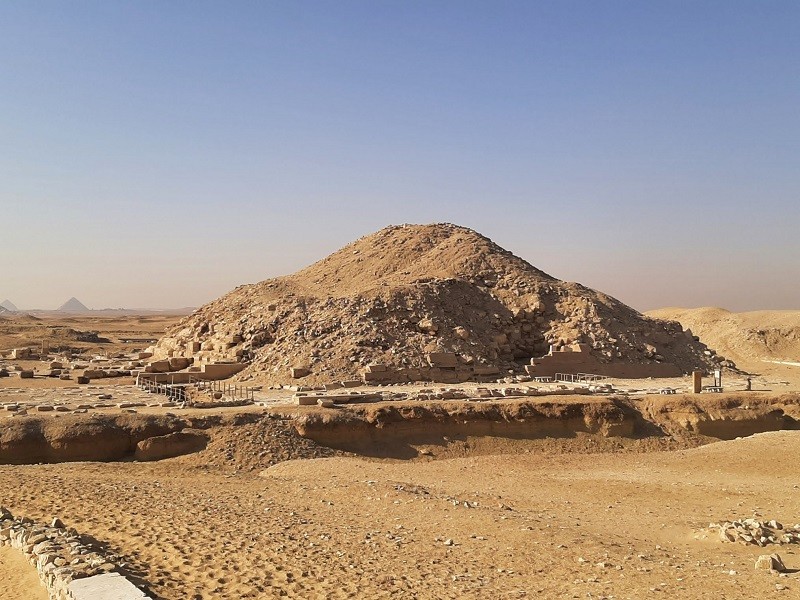


Inside the Pyramid of Unas
As I wandered around the Pyramid of Unas, the friendly caretaker approached me and asked whether I wanted to have a look inside.
Even though I hadn’t purchased the supplemental entry ticket that permitted access inside as I didn’t know this was possible at the Pyramid of Unas, I realised that this was a great opportunity to see the old funerary texts and to actually discover a pyramid from the inside.
Of course, if someone in Egypt approaches you with such an offer you should know that it is never for free and that some ‘baksheesh’ (a bribe or a tip) is expected, but it was something I was willing to pay.
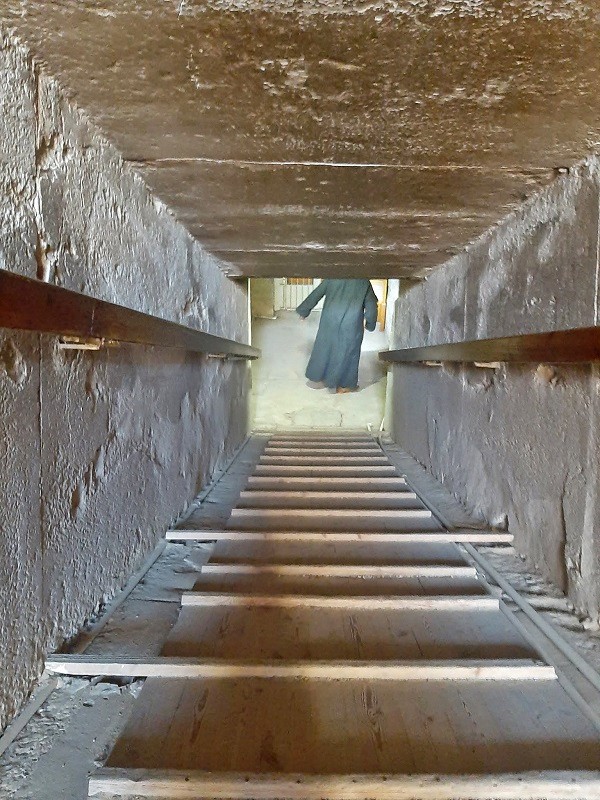
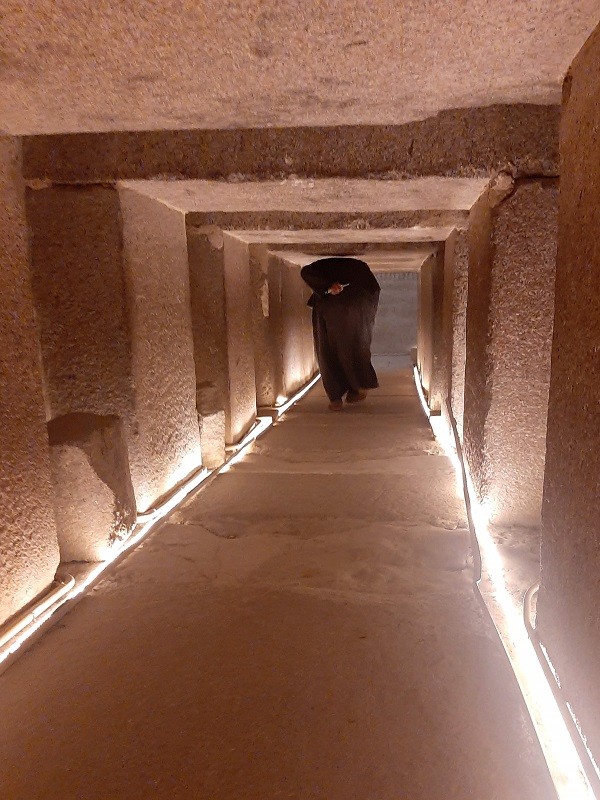




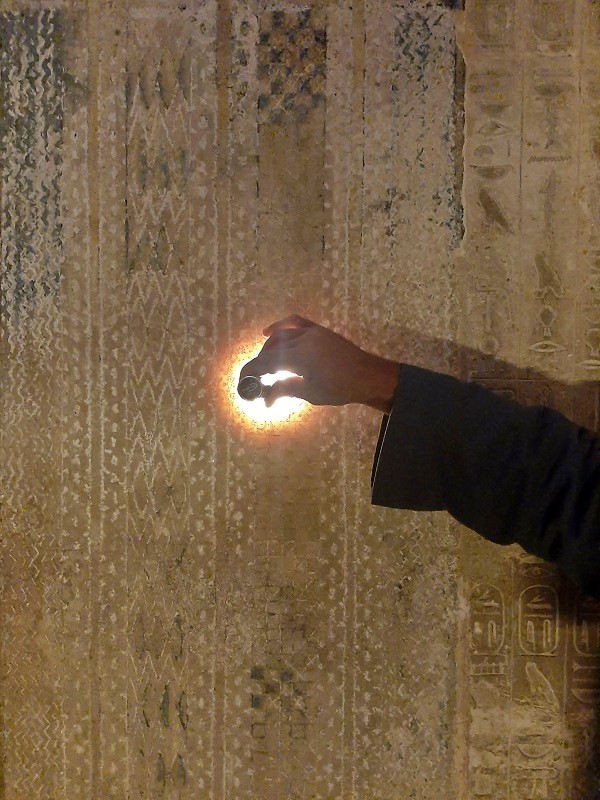
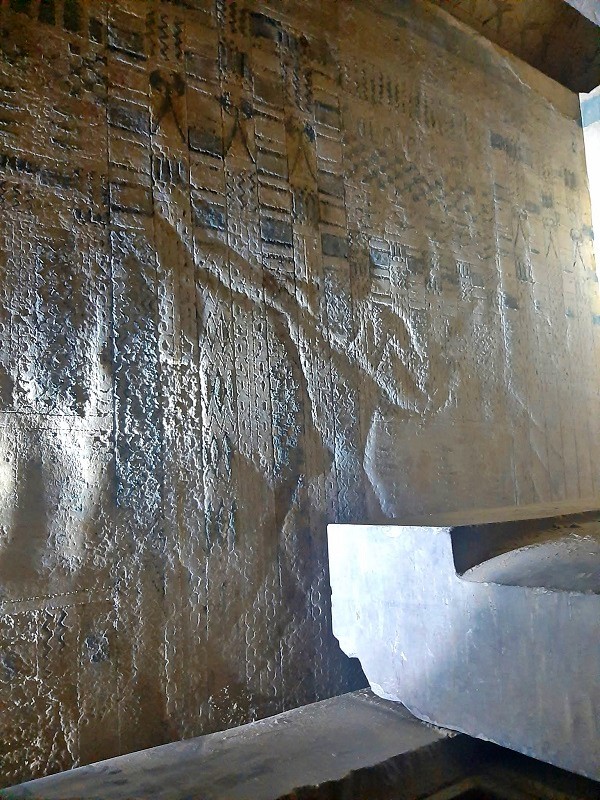

Causeway
Just like the Pyramid of Djoser, a whole mortuary complex was constructed around the Pyramid of Unas.
This includes a smaller cult pyramid, mortuary temple, and a valley temple which was built at what once was the location of an old harbour at a wadi.
The causeway that connects the Pyramid of Unas with the valley temple used to be fully walled and even roofed.



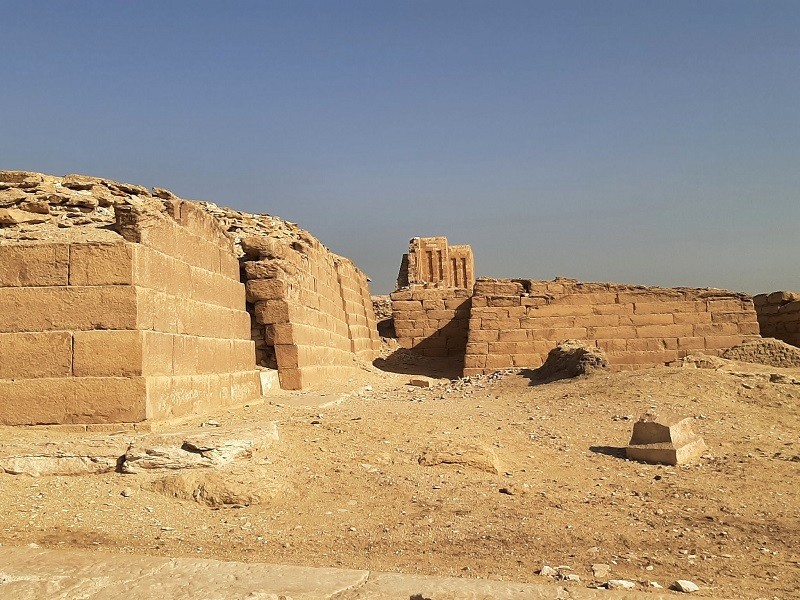
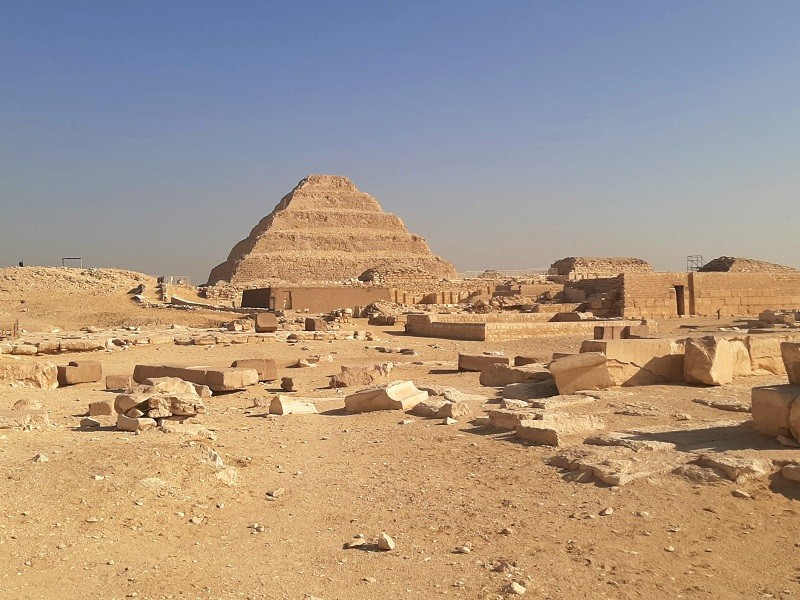
Conclusion
The Saqqara Necropolis is a must-see sight if you visit Cairo.
Saqqara used to be the necropolis of the ancient Egyptian capital of Memphis and several Pharaohs were buried here.
The Step Pyramid of Djoser is the most impressive of all structures at the Saqqara Necropolis, although the Pyramid of Unas is highly interesting as well and definitely worth a visit inside.
What’s also great about a visit to Saqqara is the lack of crowds compared to the Giza pyramid complex: Exploring this vast archaeological site really is a peaceful experience.
It’s best to combine a visit to the Saqqara Necropolis with the nearby site of Ancient Memphis and the Dahshur Pyramids in a day trip from Cairo.
The recommended way to visit Saqqara and the surrounding sights is by joining an organised tour or by arranging a taxi for half a day or a full day, depending on how long you think you will need to explore everything.
Trip report index
This article is part of the ‘Walk Like an Egyptian: A Grand Tour of Egypt‘ trip report, which consists of the following chapters:
1. Red-Eye Ramblings of a Late Night Flight to Cairo
2. A Visit to the Pyramids of Giza by Camel
3. Review: Sofitel Nile El Gezirah, Zamalek, Cairo
4. Exploring the Medieval Old Town and Islamic History of Cairo
5. Visiting the Museum of Egyptian Antiquities in Cairo
6. Mar Girgis: The Churches of Christian Old Cairo
7. Review: Ernst Watania Sleeping Train Cairo to Aswan
8. The Ancient Quarry of Aswan and the Unfinished Obelisk
9. A Boat Ride From Aswan to the Temple of Isis at Philae
10. A Visit to the Aswan High Dam and Lake Nasser
11. A Visit to the Nubian Village on Aswan’s Elephantine Island
12. Aswan Guide: A Visit to Egypt’s Most Stunningly Located City
13. A Half Day Trip From Aswan to Amazing Abu Simbel
14. Nile River Cruise Guide: All Info for Your Egypt Boat Trip
15. Review: M/S Princess Sarah Nile River Cruise Ship
16. Nile Cruise: Sailing From Aswan to Kom Ombo
17. A Visit to the Ancient Crocodile Temple of Kom Ombo
18. A Visit to the Temple of Horus at Edfu
19. Nile Cruise: Sailing From Edfu to Luxor
20. Luxor, Egypt: Visiting the Sights of Ancient Thebes
21. A Visit to Luxor’s Giant Temple Complex of Karnak
22. Visitor Guide to Wonderful Luxor Temple
23. Valley of the Kings: A Visit to Luxor’s Ancient Necropolis
24. The Temple of Hatshepsut: A Visit to a Unique Mortuary Temple
25. Review: Sofitel Winter Palace Hotel, Luxor, Egypt
26. Review: Daytime Train Luxor to Cairo, Egypt
27. Review: Steigenberger Hotel El Tahrir, Cairo
28. A Visit to the Pyramid of Djoser and the Saqqara Necropolis (current chapter)
29. A Visit to the Dahshur Pyramid Complex
30. Memphis: Exploring the Old Capital of Ancient Egypt
31. From Cairo to Alexandria by Train: My Travel Experience
32. Review: Paradise Inn Le Metropole Hotel, Alexandria, Egypt
33. Alexandria: A Visit to Egypt’s Historic Mediterranean Port City
34. Egypt: Impressions and Reflections After My Two Week Trip
35. Epilogue: Safety and How to Deal With Street Hassle in Egypt

